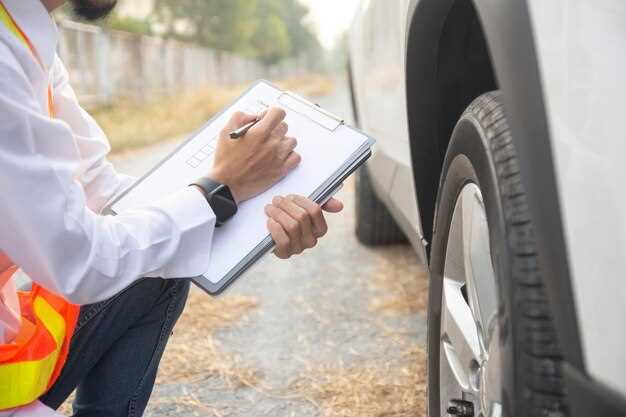
Participating in a race is an exhilarating experience, but ensuring your safety before the start is paramount. A thorough safety check can prevent accidents and help competitors focus on performance rather than potential hazards. This article provides essential guidelines to create an effective checklist that every racer should follow before the race begins.
A comprehensive pre-race safety check should encompass several critical aspects of your racing gear and equipment. These include verifying the functionality of your vehicle or equipment, checking personal protective gear, and ensuring that essential supplies are in place. Adhering to these guidelines will not only enhance your safety but also contribute to a more enjoyable racing experience.
By implementing a systematic approach to your pre-race preparations using the suggested checklist, competitors can minimize risks and focus on their performance. This proactive measure is crucial for fostering a safe racing environment for everyone involved. Make sure to review these guidelines carefully and incorporate them into your racing routine.
Mandatory Gear Inspection Before Race Day
Conducting a thorough gear inspection is a vital component of your pre-race preparation. A well-organized checklist will ensure that you verify all necessary equipment and avoid potential issues on race day.
Firstly, you should assess your personal protective gear. This includes your helmet, gloves, and any padding or body armor. Check for signs of wear, damage, or insufficient fitting, as these factors can significantly impact your safety during the competition.
Next, inspect your racing attire. Make sure your clothing is suitable for the conditions expected on race day. Breathability, moisture-wicking properties, and fitting are key considerations. Ensure that there are no loose or frayed ends that could lead to hazards while competing.
The evaluation of your racing equipment, such as bikes or boards, is imperative. Examine brakes, gears, tires, and overall mechanism functionality. Confirm that everything operates smoothly and is free of defects. Lubrication may also be necessary to ensure optimal performance.
Don’t forget about hydration systems and nutrition supplies. Verify that your hydration packs or bottles are intact, clean, and filled adequately. Furthermore, check your nutrition bars or gels to ensure they are within expiration dates and appropriately stored for easy access during the race.
Lastly, proper documentation should be included in your pre-race checklist. Make sure you carry any required race permits, identification, or emergency contact information. This documentation will be crucial should an unexpected situation arise.
In conclusion, a comprehensive gear inspection is non-negotiable for race day safety. By following this mandatory protocol, you not only enhance your own safety but also contribute to a secure racing environment for all competitors.
Health Assessments and Medical Readiness for Participants

Ensuring health assessments and medical readiness is crucial for all competitors participating in a race. A comprehensive pre-race checklist should include several key components to guarantee that each participant is fit to compete and can perform their best while minimizing the risk of injury or health emergencies.
First and foremost, participants should undergo a detailed medical examination prior to the race. This examination should assess cardiovascular health, respiratory function, and musculoskeletal condition. A health professional can evaluate medical history, current medications, and any previous injuries that may affect performance.
Additionally, participants should complete a self-assessment questionnaire that highlights symptoms such as dizziness, chest pain, or extreme fatigue. This checklist serves as a critical tool for individuals to reflect on their own health status and determine whether they are adequately prepared for the physical demands of the race.
Another essential component of medical readiness is having access to adequate hydration and nutrition strategies. Competitors should create a personalized hydration plan, testing during training sessions, and establish a nutrition checklist to optimize energy levels throughout the event. This preparation can prevent dehydration and ensure stable energy supply during the race.
Moreover, it is advisable for all participants to be familiar with emergency protocols in case of a medical incident. Understanding the location of medical personnel, first aid stations, and emergency contact numbers, as well as being aware of the signs of heat exhaustion or other common race-related ailments, is vital for promoting safety.
Finally, ensuring that all competitors have the appropriate gear and equipment, checked for functionality and safety, is an essential step in the pre-race checklist. This includes footwear, clothing, and any other specialized equipment that might be used during the race, as proper gear can significantly impact performance and reduce the risk of injury.
Environmental Factors and Course Condition Review

Before any race, a thorough review of environmental factors and course conditions is essential to ensure competitor safety. Creating a comprehensive checklist can help in identifying potential hazards and bolstering safety measures. Key elements to consider include weather conditions, course topography, and surface integrity.
Firstly, monitor the weather conditions on race day. Factors such as temperature, humidity, wind speed, and precipitation can significantly influence performance and safety. Extreme temperatures may pose risks like heat exhaustion or hypothermia, depending on the climate. Additionally, sudden weather changes, such as rain or storms, may affect visibility and traction, necessitating pre-race adjustments.
Secondly, conduct a detailed assessment of the course topography. Identify challenging sections such as steep inclines, sharp turns, or uneven terrain. These features may increase the risk of accidents or injuries, prompting the need for specific precautions. Ensure that participants are informed about these sections before the race commences.
Thirdly, evaluate the surface conditions of the course. Different surfaces, whether asphalt, gravel, or mud, have varying levels of grip and stability. Look for obstacles such as debris, potholes, or loose gravel that could compromise safety. Regularly updating the checklist to reflect any changes in surface conditions is crucial for maintaining a safe racing environment.
Lastly, communicate all findings and recommendations to competitors prior to the race. Providing clear information regarding environmental factors and course conditions enables competitors to plan effectively and make informed decisions. Conducting these reviews and adhering to a rigorous checklist will enhance overall safety and contribute to a successful event.



